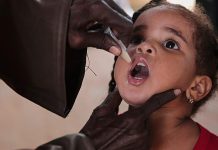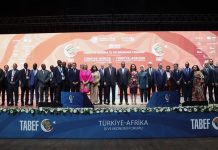Africa-Press – Lesotho. Nearly 700 million people around the world are classified as living in extreme poverty, surviving on less than $2.15 per day per person, according to the World Bank.
The UN declared Oct. 17 as the International Day for the Eradication of Poverty in a resolution adopted on Dec. 22, 1992.
Each year, the UN organizes various events and conferences to raise global awareness about poverty and mobilize international efforts to combat it.
This year’s theme for the International Day for the Eradication of Poverty is ending social and institutional mistreatment by ensuring respect and effective support for families.
Poverty on rise after decades of decline
According to a UN report, global extreme poverty had been declining rapidly from 1990 to 2019.
However, the COVID-19 pandemic and the crises that followed triggered the largest global surge in poverty seen in decades.
Since 2019, almost no progress has been made toward eradicating poverty.
Nearly half of the world’s population—especially in regions such as South Asia and Sub-Saharan Africa—lives below the economic welfare levels that would be considered poverty in many upper-middle-income countries.
Globally, around 1 billion people live on incomes between $2.15 and $3.65 per day, while nearly half of the world’s population survives on less than $6.85 per day.
8.5% of global population in extreme poverty
The World Bank’s 2024 Global Poverty Report estimates that about 8.5% of the world’s population lives in extreme poverty—meaning roughly 700 million people survive on less than $2.15 per day per person.
Those living on less than this threshold are classified as extremely poor. Meanwhile, approximately 3.5 billion people—about half of the global population—live on less than $6.85 a day, a level that would be considered poverty in middle-income countries.
Despite these challenges, East Asia, the Pacific, and South Asia stand out as the regions that have made the most progress in poverty reduction over the past 25 years.
Looking ahead, projections suggest that by 2030, about 7.3% of the global population will still be living in extreme poverty, with only 69 million people expected to rise above that threshold.
World’s poorest countries mostly in Africa
According to the online media platform Visual Capitalist, citing data from the International Monetary Fund (IMF)’s World Economic Outlook report published in April 2025, most of the world’s poorest countries—measured by per capita Gross Domestic Product (GDP)—are located in Sub-Saharan Africa.
South Sudan ranks as the poorest country in the world, with a per capita GDP of $251.
It is followed by Yemen, with $417 per capita, representing the poorest in the Middle East. Burundi in East Africa ranks third with $490, while the Central African Republic follows at $532.
Other countries on the list include Malawi ($580), Madagascar ($595), Sudan ($625), Mozambique ($663), the Democratic Republic of Congo ($743), and Niger ($751)—making them the 10 poorest countries in the world.
UN efforts to eradicate poverty
Within the framework of its 2030 Sustainable Development Goals, the UN emphasizes that eradicating all forms of poverty remains essential for achieving sustainable development.
The organization underscores the need for developing countries to implement targeted programs and policies that address poverty in all its dimensions and to mobilize the necessary resources for this purpose.
By 2030, the UN aims to ensure that these countries have equal access to economic and natural resources, fundamental services, and rights through the establishment of effective national and regional policy frameworks.
Source: world bank
For More News And Analysis About Lesotho Follow Africa-Press






